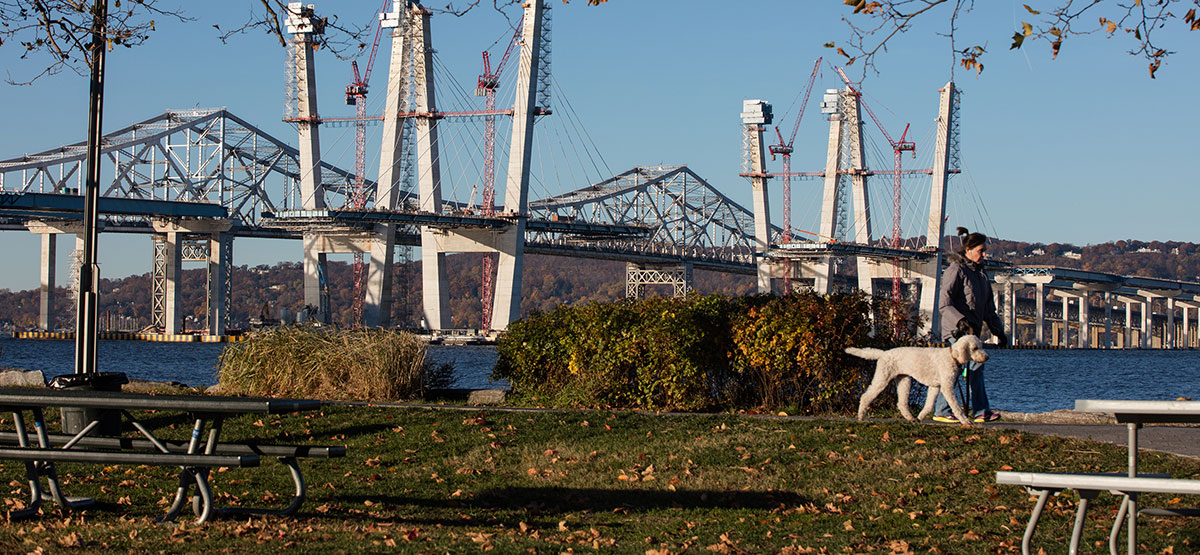
New York's New Bridge is a 21st Century Solution
The Big Apple suffers from big delays: Drivers in the New York City metro area annually lose an average of 7.3 million hours sitting in traffic. Knowing that clogged streets mean more than just slow commutes, New York officials have worked to modernize the state’s aging roadways, bridges and tunnels. Soon, drivers will reap the rewards when a soaring "New NY Bridge" opens above the Hudson River. This eight-lane expressway will break the bottleneck that exists today and allow commuters and cargo to once again sail through the Empire State and along the East Coast.

3.1 Critical Miles
Located about 15 miles north of New York City, the Governor Malcolm Wilson-Tappan Zee Bridge is a vital link for hundreds of thousands of cars and trucks traveling in and around the city each day.
The bridge is the primary way cargo arriving in the Port of New York and New Jersey reaches more than 14 million consumers living in New England. Just as important, the 3.1-mile long span allows shippers to move cargo up and down the East Coast while avoiding the crowded streets of New York City – the most densely populated city in the country.
Despite the vital role the Tappan Zee Bridge plays, it has increasingly suffered from overuse, underfunding and disrepair. When it first opened to traffic more than 60 years ago, the bridge carried about 18,000 drivers a day. Today, a staggering 134,000 vehicles cross it daily.
A Modern-era Superstructure
While the need for a new bridge has long been clear, debate over its construction dragged on for decades. Finally, in 2011, state officials passed a law authorizing five state entities to enter into design-build projects, an important step that slashed layers of red tape. A fast-tracked federal environmental review also contributed to the accelerated speed at which the project began construction in 2013. Today, a modern new Tappan Zee Bridge is nearing completion.

Scheduled to open in 2018, the soaring new cable-stayed bridge will carry eights lanes of traffic and four breakdown lanes, finally ensuring that a disabled vehicle won’t result in an hours-long standstill. It will also carry a dedicated bike lane and pedestrian path along with a bus-only lane, further allowing passengers and freight to safely and comfortably travel side-by-side. The new Tappan Zee Bridge is designed to last 100 years before any major structural maintenance is required, and has room to accommodate the possible addition of a commuter rail line in the future.
The economic benefits of the new bridge are equally expansive. Locally, it will support new jobs and continued economic growth in New York’s nearby Rockland and Westchester counties. The New York Metropolitan Transportation Council predicts that between 2010 and 2047, the two counties will welcome more than 180,000 new residents and more than 200,000 new jobs.
The improved flow of freight through New York will also mean faster shipping times and lower costs for businesses and consumers throughout the Northeast Corridor. Stretching from Maine to Virginia, this small but mighty region covers just 2 percent of land in the U.S. but is home to more than 52 million people and generates 20 percent of the nation’s GDP.
With the construction of the new Tappan Zee Bridge, New York’s political leaders have shown that big projects can still happen in the Big Apple. This type of bold leadership is at the heart of America’s Economic Expressway and proof that 21st century infrastructure is well within reach.